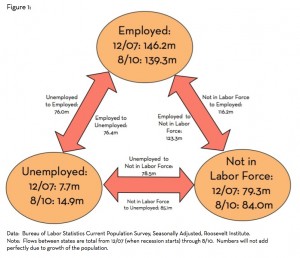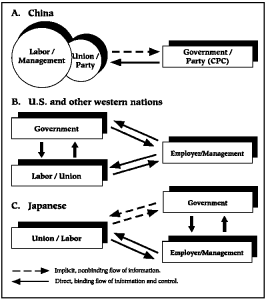Let us discuss the Labour Markets and Trade Unions
The labour market
According to a recent Labour Market Survey, there were 29.4m workers in the UK in 2008, out of a population of 61m. The labour market includes the supply of labour by households and the demand for labour by firms. Wages represent the price of labour, which provides an income to households and represents a cost to firms. In a hypothetical free market economy, wages are determined by the unregulated interaction of demand and supply. However, in real mixed economies, governments and trade unions can exert an influence on wage levels.
1.Nominal and real nominal wages
2.The demand for labour
Trade Unions
In the last Learn-it, we looked at the concept of monopsony in terms of one buyer of labour. It is possible to think of examples where there is only one seller of labour. The sellers of labour (i.e. the workers) can achieve some degree of monopolistic power if they all join to form a trade union.
Before we dive into this topic, it is worth thinking about the objectives of trade unions. Why do workers band together rather than deal with employers individually? The obvious answer is that they have more power. But more power to do what?
The two key objectives of a trade union are (i) to negotiate for their members (the workers) as high a pay rise as possible each year (and at least enough to maintain their real earnings) and (ii) to make sure that the working conditions for their members are acceptable and, hopefully, improving.
It is the collective nature of the union that gives them their power. The larger the proportion of the workforce that are members, the more clout they will have with the employers. If an individual tries to negotiate for a higher wage with his employer on his own, he will have very little clout. The employer knows that he can just find another worker if one employee kicks up a fuss (especially if the industry is a low skill one).
If a union with a large membership is refused a pay rise by the employer, the members of the union can vote on whether to go on strike (down tools and stop working!). This will affect the employer where it hurts – his profit level! An employer will be much keener to keep a whole union happy rather than an individual employee acting on his own behalf.
We now need to look at how the introduction of a union will affect the equilibrium situations for the perfectly competitive labour market and the one with a monopsonist employer (i.e. one buyer of labour).
1. Trade Union – World Bank Dialogue
2. Trade Union Participation in the Poverty Reduction Strategy Paper (PRSP) Process
3. Guidelines for Trade Union Consultation
Apply for Compensation and Benefits Certification Now!!
http://www.vskills.in/certification/Certified-Compensation-and-Benefits-Manager




